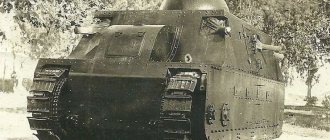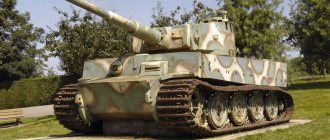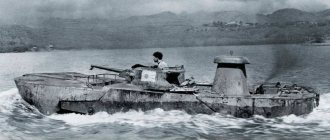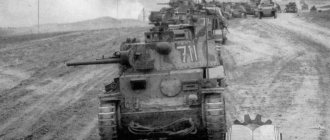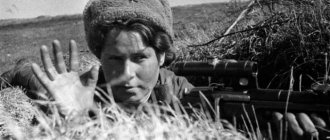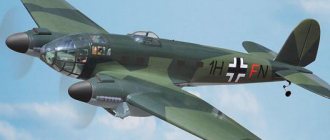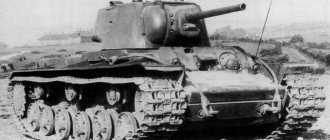Heavy tanks of the "IS" category
One of the first heavy tanks after World War II was a vehicle called the IS. The designers and developers did not think long about the name of this combat vehicle and named it in honor of the leader of the Soviet people, Joseph Stalin.
Heavy tank "IS-2"
In order to effectively and quickly end the Second World War, massive and heavy tanks were needed that would cope well with their combat missions within the city, since the military leadership of the Soviet Union knew that the last strongholds of fascist defense would be located in large German cities , for example in Berlin.
Which tank is more powerful in your opinion?
"IS" "T"
It should be noted that IS class tanks were already developed and used during World War II. Joseph Stalin personally reviewed the design and drawings of the future tank. He stated that its weight should be 46 tons. But during development, this weight was significantly increased and therefore the development was carried out in the strictest secrecy so as not to prematurely anger management.
In the IS-4 tank, compared to its previous version, the armor was significantly thickened, and the caliber of the gun was increased. The crew was accommodated in a completely new way. It should be noted that these tanks performed well during offensive operations in World War II. Despite their weight and massiveness, they were quite mobile and maneuvered through the streets of cities that the Red Army was liberating.
After 1944, design bureaus and military experts decided to invent an even newer tank. Based on all their previously manufactured guns and combat vehicles, the designers decided to create a tank that would embody all the experience of military campaigns in which similar equipment was used. Thus, the world saw the IS-7 tank.
Tank "IS-7" in the museum
Its design began immediately after the war in the summer of 1945. In an extremely short time, drawings were developed, as well as production plans for such a tank, and already on September 9, 1945, this project was approved. A special feature of this vehicle was the large angles of inclination of the armor plates, which made the equipment more secure. The tank has become more resistant to enemy shells, as well as faster on the battlefield.
Self-propelled guns of the USSR
Artillery belongs to the auxiliary class of vehicles and has experienced many nerfs, which made it less effective in battle. Very long aiming, poor accuracy and low damage do not allow you to deal a lot of damage. And after the nerf to land mines, everything became even sadder - the already ridiculous damage figures decreased by 1.5-2 times. However, this technique is still in demand in battles due to its ability to reach enemies where allies cannot. The gameplay on it is simple and measured, allowing you to take a break after hot battles or a series of failures. We recommend downloading art at the very end, after you learn how to play a different technique and want something new.
4.1. Branch Ob.261
Soviet art cannot be characterized in general terms, since there are vehicles in the branch that differ greatly in characteristics.
SU-122A (level 5)
All you need to know about this “misunderstanding” is that you need to avoid it. She has a very weak scythe weapon with scanty damage and virtually no splash. You can inflict at least some damage only by accurately and very successfully hitting the weak spot of the tank, which is extremely difficult to do with such precision. You will go through it forever and curse everything in the world. Therefore, we highly recommend going to the next self-propelled gun for free experience and blueprints.
SU-8 (level 6)
This is a completely different matter - I consider it the most pleasant self-propelled gun at the sixth level after the American M-44 and, in terms of its top gun, better than the German Humel. It deals normal damage for an art of its level, hits across the entire map, has a fairly rapid fire rate (after the recent nerf, the M-44 has caught up with it in this indicator), often deals a little more damage when hit and with splash (fragments), and has passable horizontal aiming angles ( UGN), small dispersion and relatively fast convergence after turning the chassis. In general, it is very close in effectiveness to the best art of the sixth level M-44 (it is more comfortable due to the huge UGN). If you love art and enjoy playing on the sixth level, you can leave it in the hangar. Low maintenance costs allow you to even farm on it; there are many “soft” targets in battle, and if necessary, you can move it – the speed allows it. The projectile's flight path is flat - it flies quickly, but cannot be thrown behind cover.
S-51 (level 7)
The famous "Pinocchio" once terrified random people - many tanks burst when hit. All thanks to a powerful weapon with the largest caliber on the level. A huge drawback was the very small UGN, wildly long mixing and reloading of more than 70 seconds, which simply froze out schoolchildren with fragile “claws.” But those who could endure and knew what to do were rewarded. Then this artillery piece was transferred from the sixth to the seventh level, eliminating convergence and reloading. Now it’s just a more or less normal pass-through vehicle on the way to an “adult” vehicle with similar gameplay, but more comfortable firing. This art is slower than its predecessor and moving is not its strong point. The firing trajectory is hinged - the projectile flies slowly, but can be thrown behind cover, the splash (scattering of fragments) is good.
SU-14-2 (level 8)
The so-called “Refrigerator” with simply enormous mass and dimensions, comparable to Mouse and the same disgusting mobility, but many LT and ST have already crashed against it. This self-propelled gun starts firing from the spawn point and remains there, as a rule, until it hits the hangar. The UGNs are just as small, but the dispersion from turning the chassis and the subsequent convergence are quite tolerable. The refrigerator hits hard and when it hits (if it hits) it can cause decent damage. This is precisely why “Sovietophiles” love him. In general, this is the first truly adult art that teaches how to play self-propelled guns with a large caliber, usually choosing the direction to fire in advance. The shooting trajectory is hinged, the splash is good.
Vol.212 (level 9)
In every way an improved version of the refrigerator, neither subtracted nor added. In terms of gameplay, everything is identical, it’s just that this self-propelled gun has faster aiming and reloading, less dispersion and better accuracy, plus it’s a little more mobile. Damage, splash and firing trajectory are the same. The art is generally not bad and can be left in the hangar instead of a refrigerator.
Vol.261 (level 10)
It is radically different from all previous and other level ten self-propelled guns in the game. This is an art sniper (so to speak) - it is accurate and rapid-fire. The other “side of the coin” is the low damage of high-explosive shells and the flat flight path, which does not allow the shell to be thrown at enemies behind cover. But the rate of fire and accuracy make up for these shortcomings for many. Plus, the art is fast and can effectively fire AP shells, penetrating armor and causing good damage, unpleasantly surprising opponents. It is easy and interesting to play; the car can sometimes defend itself in close combat from an unexpectedly arriving enemy and is worth its place in the hangar.
Of course, playing art now is not as effective as before, but as they say, “If you want to play, it’s joy for the soul.” After all, there is nothing more pleasant than watching the farts of extras explode
Tanks of category "T"
Even at the beginning of the Second World War, military officials realized that the Red Army did not have tanks that were massive enough, and at that time mobile, so that they could evade enemy shells, maneuver on the battlefield, but at the same time inflict significant damage on the enemy and have thick defensive armor.
Expert opinion
Alexander Nikolaevich Rumyantsev
Inventor, owner of many patents, candidate of technical sciences, professor at St. Petersburg Technical University.
During the war, the main heavy combat tanks were the IS-2, IS-3a and IS-4. But they were not effective enough. That is why the military leadership decided to create a completely new type of tank.
According to military officials, the new combat vehicle should not weigh more than 50 tons, but have a fairly good defensive system and armor. These Stalin tanks were combat vehicles of the IS-4 and IS-7 categories. But still, they were not effective enough, so the decision was made to radically change the entire weapon system and create a completely new one. Thus, a completely new tank with the T-10 marking was born. Which marking was adopted only after Joseph Stalin died and guns with the abbreviation of his name ceased to be in demand.
T-10
This tank became truly legendary for its time. It was armed with two machine guns and a cannon, the caliber of which was 122 mm. The tower was protected by a layer of armor of 200 mm. The hull had armor 120 mm thick. The mass of the tank, as previously assumed, was exactly 50 tons, which allowed it to be very mobile. The ammunition included 30 shells and more than 1000 rounds of machine gun ammunition. The tank could reach a speed of 45 km per hour on the highway.
Expert opinion
Isaac Yakovich Zelder
Soviet astrophysicist, physical chemist, Doctor of Physical and Mathematical Sciences, Academician of the USSR Academy of Sciences, designer, engineer. Hero of Socialist Labor of the USSR.
Over time, various modifications of this model arose, for example T-10M, as well as T-10A and T-10B.
Modernization and mechanization of military equipment in the USSR
In 1929, the Party's Central Committee adopted a special resolution, according to which the Soviet army should be modernized and rearmed in the near future. Officials demanded from the designers, as well as the leaders of the Red Army, that new models of tanks, artillery installations, and aircraft enter service in the near future.
In addition, specific goals were set for army leaders for the next few years. The Red Army must be larger in number than any army in the world. Also in service must be new types of aircraft, artillery and tanks, which must be developed and delivered to the army. Officials planned that military designers would be able to produce more than 1,000 new tank models within five years.
It must be said that at that time the Soviet Union lagged significantly behind countries such as Great Britain, France and Germany in its tank development development. For example, at that time the Soviet tank regiment consisted entirely of captured vehicles that were captured in various battles.
A special organization was established to develop and build tanks. At that time, the main design bureau had already provided one of the first Soviet T-17 tanks. A project for the T-16 tank was also presented, which was very light and had to move and defend on the battlefield with infantry cover. A heavier and more advanced T-12 tank was also presented. It was he who became the first tank that the Kharkov plant produced; in the future it would produce most of the Soviet tanks, including the legendary T-34.
In the 1930s, the T-16 was modernized and it was the main combat vehicle of the Red Army. For its time, it was quite maneuverable, and also had good weapons and armor. With the support of infantry, this tank at the front had the ability to quickly maneuver and also carry out lightning attacks on less mobile enemy tanks and vehicles. But, despite its positive qualities, this car was far from ideal and had several big disadvantages. For example, the tank turret and the machine gun were directed towards each other, in such a way that it was not possible to fire from two guns at the same time. Therefore, already in 1930, this tank was modernized again, at that time it was equipped with a completely new turret, which was developed already in the USSR, and not according to the French model. In 1931, this tank was removed from service by the Soviet army. In total, it was produced in the amount of 900 cars.
New variants of the "T" brand combat vehicle
Time did not stand still, as did the development of technology. After the legendary T-34 tank, which practically became the key to successful offensive operations during the Second World War, the design bureau in Nizhny Tagil was given the task of constructing a modernized model of the most powerful and popular tank.
There was no longer a need to create heavy Tanks for urban battles. The Red Army needed medium tanks that could move quickly over various obstacles and were not inferior in power and strength to enemy tanks, which in turn were also actively developing military equipment. Thus, the world saw the T-54 tank. It remained in service with the Red Army for a long time and was the main combat vehicle. Later, based on the T-54, a new model was created, which was called the T-55. The main feature of this combat vehicle was the ability to cover long distances and also drive through water obstacles of any depth.
Legendary medium tank T-34
Even for modern vehicles, the T-55 battle tank, which has been even more modernized and improved over time, is quite a formidable opponent. The combat weight was approximately 37 tons, which made it possible for this vehicle to move quickly and carry out its combat missions over wide areas of the front, as well as work in terrain with fairly complex terrain. The crew, as before, consisted of four people. The tower was protected by armor, the thickness of which was 200 mm. It was armed with a 100 mm rifled cannon and two machine guns. The entire kit was reduced by 43 shells and 3,500 rounds of machine gun ammunition.
T-54 and T-55 tanks took part in many military conflicts, including conflicts that have taken place in our time. They coped with their tasks quite effectively. These combat vehicles were successfully used as infantry support weapons in the war in Afghanistan and also in the Iran-Iraq war. Such equipment was very often exported and used by different countries to arm their armies. According to experts, more than 50,000 T-55 and T-54 tanks were produced in the Soviet Union.
Later, new types of similar weapons were also designed and manufactured. For example, the T-62 tank has become more efficient, powerful and more modern, and it is still used today.
A Brief History of the Soviet Tank
History buffs often study cars in isolation from the conditions in which they were created and the reasons that prompted the designers to develop them. Meanwhile, military equipment is not a cheap pleasure, and behind every innovation introduced in a particular tank, and every model that went into production or remained in a single copy, there is far more than just the research passion of the designer. The reasons for implementation or, on the contrary, refusal to put it into service can be very different - from the political situation in the country and the world to the “fashion” for certain technical solutions. Understanding these nuances allows us to create a more harmonious and meaningful picture of the development of tank building.
The first stage of development of tank building in the USSR (1920–1929) - “Russian Renault”, MS-1 (T-18), T-12 and T-24
The history of Soviet tank building began during the Civil War, when in 1920–1921 the Sormovsky shipyard in Nizhny Novgorod produced the Russian Renault tank in a series of 15 vehicles, which was an almost exact copy of the French Renault FT-17.
By 1925, these vehicles had become outdated, and the Main Directorate of Military Industry (GUVP) of the USSR set the task of creating a new tank. It was developed by Leningrad, taking as a basis the Italian Fiat-3000 specially purchased for this purpose (according to other sources, captured from the Poles). The suspension was copied from the French Renault NC27.
Both vehicles used were technical developments of the Renault FT-17 design, so the MS-1 tank designed by 1927 (T-18 index is often used) was very similar in appearance to the “Russian Renault”.
MS-1 differed from the prototype in a number of innovations. In particular, the transverse engine arrangement made it possible to significantly reduce the length of the tank. The next time Soviet designers returned to this technical solution only when designing the T-44 in 1944. The tank's suspension was also improved. Since the late 1920s, instead of the outdated coaxial 6.5 mm Fedorov machine gun, the T-18 began to be equipped with a 7.62 mm DT machine gun (designed by Degtyarev), which faithfully served Soviet tankers for the next 20 years, until the end of the 1940s
Light tank MS-1 on display at the Military Glory of the Urals Museum of Military Equipment in Verkhnyaya Pyshma (Sverdlovsk region) Source – wikimedia.org
In the same 1927, the Main Military Administration formulated the final requirements for a tank weighing 12 tons. This more powerful and faster escort vehicle, which was specified in the documents as a “maneuverable tank,” was entrusted to the design bureau of the Kharkov Locomotive Plant (KhPZ). The result was a completely new medium tank, the T-24, and in 1931 KhPZ received an order to produce 300 units. True, very soon the order was canceled - the plant was ordered to switch to the production of BT-2 tanks.
In fact, during the 1920s, three main design centers of Soviet tank building were formed in Leningrad, Kharkov and Moscow, which subsequently determined all trends in its development.
Foreign contracts - 1930
The work of Soviet engineers on the creation of tanks and wedges (T-12, T-17, T-19, T-20, T-21, T-23, T-24, T-25) showed that the Soviet Union lacks design experience activities of this scale, personnel and basic production culture. In order not to waste time on solving these issues by domestic specialists, the head of the Department of Mechanization and Motorization of the Red Army, corps commander Innokenty Khalepsky, suggested that the country's top leadership purchase samples of suitable tanks and licenses for their production abroad, and also invite foreign specialists to work in the USSR. On December 5, 1929, an official decision was made to send a special commission headed by Khalepsky abroad. In 1930, she visited several tank-producing countries, among which England, Germany and the USA were of particular interest.
The first deal was concluded on April 28 between the American company US Wheel Track Layer Corp., owned by designer John Christie, and Amtorg Trading Corp. - a company through which equipment and weapons were exported to the USSR. According to the agreement, the Soviet Union acquired two M1931 tanks and the right to produce them.
May 28 with the British company Vickers & Armstrongs Ltd. a contract was signed for the supply of fifteen Mk.E “Model A” tanks to the USSR in a version with two machine gun turrets for 7.7 mm Vickers machine guns (future T-26). In addition, 20 Carden-Loyd Mk.IV tankettes (the basis of the T-27) and 15 Medium Mk.II vehicles were purchased. The British refused to sell the three-turreted Medium Mk.III.
Khalepsky cheated: he told representatives of the British manufacturing company that he had already received permission to purchase this vehicle from the British Defense Department and now he needed more information about the tank to report to management. So the Soviet side received the maximum amount of materials, thanks to which the T-28 tank was later created in Leningrad
English medium three-turreted tank Medium Mark III from Vickers-Armstrong in the factory workshop Source – wikimedia.org
Multi-turreted tanks (1930–1940) – TG-1, T-35, T-28
After defeat in the First World War, Germany did not have the right to produce tanks, so purchases of armored vehicles were not carried out from it. Instead, Khalepsky invited an entire design bureau to the USSR under the leadership of Edward Grote. Soviet developers had already turned to these specialists for advice when designing the T-17 wedge and the T-20 tank.
In March 1930, the AVO-5 design bureau was created, and within a year its employees developed a new vehicle, the TG-1, the two turrets of which were mounted on top of each other. But the tank turned out to be too expensive: its cost was 1.5 million rubles, while the BT-2, created on the basis of the American M1931, cost only 60 thousand. As a result, the car did not go into production, and the German engineers went home. The Soviet part of the design bureau at plant No. 185 began creating a heavy five-turret T-35, the layout of which the designers borrowed from the British A1E1 “Independent”.
However, over time it became clear that multi-turreted tanks, for a number of design reasons, had no prospects for development, and they were later abandoned.
T-35 on display at the Museum of Armored Vehicles in Kubinka Source – wikimedia.org
In parallel with the development of the T-35, the design of a Soviet medium three-turreted tank began, taking into account information about the English Medium Mk.III brought by the Khalepsky commission. The work was supervised by designer Semyon Ginzburg. As a result, by 1933, the T-28 was designed - one of the most well-armed and armored medium tanks in the world in the mid-1930s. During the development of its production, a tank school was formed at the Kirov Plant (formerly Putilovsky), and a specialized design bureau SKB-2 was formed, which played a huge role in the subsequent development of the design of heavy tanks in the USSR
BT series tanks (1931–1940)
After the cancellation of the order for the T-24, the Kharkov Locomotive Plant began production of BT-2 tanks, created on the basis of the American M1931 designed by engineer Christie. This vehicle was of great importance for the subsequent development of Soviet tank building: it was the first to use Christie suspension and inclined front armor parts. The tank was built according to the classical design, had a welded hull and moved on both caterpillar and wheeled tracks. Further development of the BT-2 resulted in the creation of the BT-5 with a more spacious elliptical turret on an extended shoulder strap, in which a twin 45-mm tank gun and a 7.62-mm machine gun were mounted. The hull and chassis of the BT-5 were practically no different from the BT-2.
BT-5 on display in the diorama museum “Breaking the Siege of Leningrad” near Kirovsk Source – wikimedia.org
In 1935, the Kharkovites took a step further, creating the BT-7 tank - its chassis was already significantly different from the M1931. The designers installed the V-2 tank diesel engine on the BT-7M model. In the process of working on this tank, they came up with the idea of creating a fundamentally new vehicle, which was later to become the legendary “thirty-four”.
Europe's first tank diesel V-2 (1939)
On September 1, 1939, at the Kharkov plant No. 75, separated from the KhPZ, the legendary 12-cylinder V-2 diesel engine was put into serial production, modifications of which were installed on almost all medium and heavy Soviet tanks up to the T-64. The first machine on which it began to be mounted was BT-7M. Over time, minor changes were made to the engine, but the main design solutions remained the same as those found in Kharkov in the late 30s of the last century.
Tank diesel V-2 in the museum of the history of the T-34 tank Source – wikimedia.org
Heavy tanks of the KV series (1939–1943) – KV-1, KV-2, KV-13, KV-1S
By the end of the 1930s, the T-35 was completely obsolete. A struggle developed between the design bureaus of Leningrad tank factories for the creation of a Soviet serial heavy tank. Experimental Plant No. 185 was working on a twin-turreted T-100 weighing 58 tons, the turrets of which were placed one after the other at different levels, which should have allowed them to fire simultaneously. This arrangement was determined by the performance characteristics presented by military customers. At the Leningrad Kirov Plant they created the SMK tank (Sergei Mironovich Kirov) with a similar layout and weighing 55 tons. But, realizing that a single-turret vehicle could be equipped with thicker armor, the Kirov team proactively created another heavy tank - the KV (Klim Voroshilov).
All three tanks were tested during the Winter War with Finland in battles on the Karelian Isthmus in a combined tank company. Based on the test results, the military chose the KV tank, which, with the advent of its 152-mm version KV-2, received the index KV-1.
KV-1 at the Aberdeen Proving Ground Source – wikimedia.org
The Kirov plant continued research work. The improvement of the KV-1 resulted in the creation of the KV-1S model - a lightweight version of its predecessor; new models were designed using already developed components.
Further development of heavy tanks moved towards reducing their mass and bringing it to the level of medium tanks. At the same time, the thickness of the armor remained the same due to more efficient use of the reserved volume. The result of this work was the creation of the experimental medium tank KV-13, which the Leningraders designed while already in evacuation in Chelyabinsk. However, in terms of overall performance characteristics and manufacturability, the vehicle could not compete with the T-34 medium tank that had already been created by that time, although the thickness of its frontal armor of 120 mm was very attractive.
The KV-13 medium tank and its design development “Object 234” (an intermediate version before the IS tank). It also had five rollers (a sixth was added to the IS), and a 122-mm U-11 howitzer was installed in the turret. Source – inarms.ru
When, by mid-1943, heavy German Tiger and Panther appeared at the front en masse, they remembered the KV-13. As a result of its refinement, a new line of Soviet IS heavy tanks appeared. During the restructuring of production to new vehicles, a transitional version was produced for some time - the KV-85, which was a modernized KV-1S with an 85-mm gun installed in its turret instead of a 76-mm cannon.
Medium tank T-34 (1940–1943)
In September 1938, the design bureau of the Kharkov plant received an order to design a new light tank A-20. It was planned to use the V-2 tank diesel engine as a power plant. The upper frontal part had to be made straight, inclined at an angle close to 60°, which significantly increased the likelihood of a projectile ricocheting from a 45-mm plate. This tank, like all vehicles of the BT series, was required by Moscow to be made on a wheeled-tracked vehicle. But the KhPZ designers, led by Mikhail Koshkin, had their own point of view on this matter. In the end, Stalin, who personally oversaw the development of Soviet tank building, allowed the Kharkovites to develop their own version of the tank with anti-ballistic armor and a fully tracked propulsion system.
Pre-war tanks produced by plant No. 183 (Kharkov). From left to right: BT-7 (A-8), A-20, T-34–76 with L-11 cannon (1940), T-34–76 with F-34 cannon (1941) Source – wikimedia .org
This is how the A-32 tank project appeared, which later became the A-34 project, and after a convincing victory in comparative field tests (including over the A-20) - the famous T-34. It differed from the vast majority of its Western counterparts in its sloping frontal armor, 76-mm F-34 cannon, V-2 tank diesel engine and Christie suspension. Taken together, all this made it a fast and well-armored vehicle with high maneuverability and a powerful, reliable gun. Before the appearance of the Tigers and Panthers, as well as the Pz.Kpfw. IV with modernized T-34 guns was superior to German tanks in its characteristics. Wehrmacht tankers were saved in battles only by experience and coordination of actions.
Heavy tanks of the IS series during the war (1943–1945) – IS-1 and IS-2
The IS-1 was designed as a replacement for the KV-1. With the appearance of the German "Tigers" at the front, work accelerated. The originally planned 76 mm gun was replaced with an 85 mm one. This led to an increase in the size and weight of the structure, and the vehicle moved from the category of medium (prototype of the KV-13 tank) to the category of heavy. The plant produced only 130 of these vehicles - they were soon replaced by IS-2, which were armed with a 122-mm gun and could fight on equal terms with the German Tigers and Panthers.
IS-1 on display at the Kyiv Museum of the Great Patriotic War Source – photo archive of the author
Many German tankers admitted that the heavy IS-2 was a worthy opponent. Its 122 mm cannon easily penetrated the armor of Panthers and Tigers and was effective in assaulting fortified areas. The tank performed so well that it was completely removed from service with the Russian army only in 1995. Work to strengthen its armor led to the creation of new IS-3 and IS-4 tanks.
Medium tank T-34–85 (1944–1958)
The need to counter the Tigers and Panthers forced Soviet designers not only to speed up the development of heavy vehicles, but also to increase the power of guns and the protection of medium tanks. As a result, the T-43 tank was developed with more powerful hull armor, a new turret with an 85 mm gun and torsion bar suspension. However, the transition to the production of a new car would lead to a decrease in total output. In addition, the permissible weight of the structure was exceeded, so they decided to continue production of the T-34 with the turret from the T-43. The new tank received the index T-34–85.
T-34–85 on display at the Kyiv Museum of the Great Patriotic War Source – author’s photo archive
The vehicle proved itself to be excellent and - in parallel with the new models T-44 and T-54 - was produced in the USSR until 1950, and in the world until 1958, including at Polish and Czech enterprises. In addition to the Second World War, this tank participated in many local conflicts in the Middle East, Africa and Latin America. Its last use in battles was the wars in the Balkans, which broke out in the 90s of the last century after the collapse of Yugoslavia.
Heavy tanks of the IS series in the post-war period (1945–1966) – IS-3, IS-4, T-10 (IS-5, IS-8)
Simultaneously with the production of the IS-2 tank, work was underway at Experimental Plant No. 100 and the Chelyabinsk Kirov Plant (ChKZ) to create new heavy tanks. Engineers designed the IS-4, which was a logical continuation of the IS-2 design. But military receivers gave preference to the IS-3, the body of which with the famous “pike nose” was designed at factory No. 100. The tower was designed at ChKZ, and mass production was also established there. However, the first months of operation of the IS-3 in the army revealed a number of shortcomings, and its production was stopped.
IS-3 on display at the Kyiv Museum of the Great Patriotic War Source – author’s photo archive
The development of heavy tanks continued actively after the Second World War. The most successful was the IS-8, a project of the Chelyabinsk designers of plant No. 100 (at the initial stage of work in 1944, the tank had the index IS-5). The combat weight of the vehicle was 50 tons. The IS-8 was also a development of the IS-3 design, so it retained its “pike nose”. It acquired the final index T-10 in 1953 after the death of Joseph Stalin, after whom the entire line of IS tanks was named. The number “10” meant that this was the tenth heavy tank put into service in the USSR. The vehicle turned out to be so successful that it was removed from service only in 1993. The frontal armor of the T-10 reached 120 mm. It was the last mass-produced heavy Soviet tank - it was soon replaced by fast, well-armed medium tanks, called "main" tanks.
T-10 on display at the Kyiv Museum of the Great Patriotic War Source – author’s photo archive
Medium tanks T-54 and T-55 (1946–1979)
After the end of the Second World War, the armament of the T-44 tank did not fully meet modern requirements: its turret, taken from the T-34-85 with an 85-mm cannon, was already outdated at that time. By 1946, a new turret with a 100 mm gun was developed. In this form, the tank, designated T-54, went into production. However, service with the troops revealed a number of shortcomings, and in 1949 the vehicle underwent a deep modernization: the shape of the turret was changed and the armor was reduced to make the structure lighter. In 1951, the T-54 turret was replaced again, this time with a hemispherical one, after which the tank acquired its final, familiar silhouette. Further modernization concerned the improvement of the design of the gun stabilizer, ejector, anti-nuclear protection, ammunition racks, instruments, equipment, etc. The result of all these changes was the T-55 tank, created under the leadership of Leonid Kartsev at the Nizhny Tagil plant No. 183.
T-55 on display at the Kyiv Museum of the Great Patriotic War Source – photo archive of the author
The predecessor of the T-54 was the T-44 tank, produced in 1944
–
1958 It did not take part in combat operations during the war, largely due to the fact that the latest technical solutions implemented in the T-44, which allowed the USSR to be decades ahead of its competitors, could fall into the hands of the enemy. The transverse rather than longitudinal arrangement of the power plant reduced the length of the tank, and a different arrangement of some of the units on the B-44 diesel engine made it possible to reduce the height of the vehicle. Starting with the T-44, torsion bar suspension appeared on Soviet medium tanks. In addition, they abandoned the directional machine gun and the radio operator gunner.
T-44 in the Museum of the city of Volsk Source – wikimedia.org
Main tank T-62 (1961–1975)
The creation of the T-62 actually put an end to the development and production of heavy tanks in the USSR. The installation of the 2A20 smoothbore 115-mm cannon brought medium tanks closer to heavy tanks in terms of weapon power (the latter were equipped with 122-mm rifled guns). At the same time, the rate of fire of the T-62 was higher. In addition, it was planned to install an automatic loader on subsequent models, which would make heavy tanks completely useless. The frontal armor of the T-62 was also close to heavy (100 mm), and its maneuverability was significantly higher.
T-62 on display at the Kyiv Museum of the Great Patriotic War Source – author’s photo archive
The time has come for the main tanks. Soon after the T-62, the T-64 was created in Kharkov at the Morozov Design Bureau. Subsequent Soviet tanks - T-72, T-80, as well as the Russian T-90 and Ukrainian "Oplot" and "Bulat" use design solutions implemented in this vehicle
The traditions of Soviet tank builders did not disappear after the collapse of the USSR. In 2015, the creation of the main Russian tank of the new generation T-14 “Armata” with an uninhabited turret, which has no foreign analogues, was completed. On May 9, he will take part in the parade on Red Square dedicated to the 70th anniversary of the Victory, after which he will enter the Russian Armed Forces. This machine is intended to finally replace the well-served machines of the T-64, T-72, T-80 and T-90 series.
Missile tanks
In the 1960s, military officials decided that the Red Army needed to adopt some kind of military equipment that could cope with enemy battle tanks. Thus, in 1968, on the basis of the T-62 medium tank, a special turret was built, which included a rocket launcher. The new tank was named IT-1.
IT-1 "Dragon"
This name stands for tank destroyer. Serial production continued from 1968 to 1970. The armor of this mechanism was represented by special ones with boiled cardboard sheets; it was very durable and resistant to enemy attacks. The turret was represented by a cast hull with an ATGM installation. In addition, special additional mechanisms were also installed that were not previously used in Soviet tanks, such as day and night vision devices, as well as a missile guidance stabilizer and a unique night sight. The missiles' range was more than 3000 m.
The combat weight of such a mechanism was 35 tons, the crew included 3 people. The forehead of the turret was protected by armor 206 mm thick. The hull was protected by armor, the thickness of which was more than 100 mm. The new weapon included a special ATGM installation, codenamed “Dragon”, as well as an additional machine gun with a 7.62 mm bullet caliber. This tank could cover fairly long distances at good speed; for example, at a speed of 50 km per hour, this combat vehicle could cover a distance of up to 600 km.
Experimental and prototypes
Back in 1956, designers and military leaders decided that the T-10 tank was already outdated and a completely new model needed to be created to replace it. Three design bureaus immediately began to develop a new combat mechanism, almost on a competitive basis. The design bureau of the Leningrad plant decided to use design solutions borrowed from the T-10 and IS-7 tanks and implement them in a single new vehicle.
Rocket tank destroyer IT-1
Thus, in 1958, a sample of a new experimental tank was born, codenamed object 277. Its development and unique capabilities were kept in the strictest secrecy. At the moment it is known that it had a 1000 horsepower engine, weighed 55 tons, and could reach a speed of up to 55 km per hour.
Expert opinion
Alexander Nikolaevich Rumyantsev
Inventor, owner of many patents, candidate of technical sciences, professor at St. Petersburg Technical University.
This tank had a sealed hull and could move underwater; for this purpose, special underwater driving systems were installed. The new weapons included a 130 mm rifled cannon and a machine gun equipped with 14.5 mm ammunition.
This tank was never put into service for unknown reasons. After him, the design bureaus did not stop and began to develop new models of similar machines. This is how a tank called object 279 appeared.
A special feature of this combat vehicle was the presence of not 2, but 4 tracks at once; it was assumed that this combat vehicle would be able to overcome any obstacles and move much faster than previous developments. This tank was made in only one copy.
Object 279
After it, object 770 was built. It had a protected pair of tracks, armor thickness of almost 300 mm. It was armed with a 130 mm cannon and a machine gun. All these experimental tanks were never officially adopted by the Red Army and are currently in the museum of weapons and equipment.
New tanks for the Red Army
After the T-16 was removed from army service, the T-12 tank was created at the Kharkov Locomotive Plant. According to the original drawings and plans of the designers, it should have weighed 16 tons. But in the end it weighed almost 20 tons. It was armed with a 45 mm cannon and was also equipped with three machine guns. In 1929, this tank received the final name T-24 and was put into service.
As military experts later said, this tank was inactive in battle and practically unprotected, so it was soon removed from service and its production was stopped. This tank is limited to only 25 units.
Cease production of heavy tanks
The development and production of these heavy tanks was stopped due to the whim of the then leader of the Soviet Union, Nikita Khrushchev. He believed that such heavy combat vehicles were not needed at all, since he himself was a big fan of rocketry. After a thorough inspection of new models of heavy tanks, Khrushchev forbade the development of such combat vehicles.
Nikita Khrushchev
After Khrushchev issued the corresponding order, the production and development of heavy tanks was completely stopped. Medium tanks entered the arena and became the main ones for the Red Army for many years. Medium tanks increased their potential, armament and technical characteristics over time.
After Khrushchev left power in the Soviet Union, they continued to develop tanks under the “T” marking. For example, one of the most advanced and most powerful tanks ever developed in the Soviet Union was the T-80 combat vehicle.
Tank T-80


